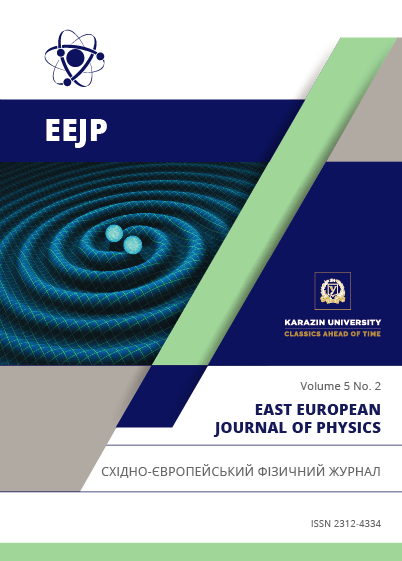SURFACE ELECTROMAGNETIC WAVES IN A GAP BETWEEN TWO LEFT-HANDED MATERIALS
Abstract
The slow surface electromagnetic waves that propagate along the planar waveguide structure that contains two identical isotropic left-handed material with the vacuum (or air) gap has been considered. The possibility of propagation of slow surface electromagnetic waves of TM and TE polarizations in the frequency range at which the dielectric permittivity and magnetic permeability are negative are shown. By selecting a frequency, one, two or three modes can be excited simultaneously. The group and phase velocities of the TE polarization waves are directed in opposite directions. The frequency range of the existence of the TE mode with an antisymmetric field distribution lies above the frequency range of the existence of the TE mode with a symmetric field distribution. The TM wave, depending on the wavelength, can be either forward or backward, or have zero group velocity. The wave of TM-polarization has a slightly varying group velocity in a sufficiently wide frequency range. A rich set of different properties of these waves make them promising in applications.
Downloads
References
Nonlinear, tunable and active metamaterials / Edit. by Ilya V. Shadrivov, Mikhail Lapine, Yuri S. Kivshar. Springer, 2015. – 324 p.
Vuković S.M. Aleksić, N.B., Timotijević D.V. Guided modes in left-handed waveguides // Optics Communications. – 2008. – Vol.281. – P.1500.
D’Aguanno G., Mattiucci N., Scalora M., Bloemer M.J. TE and TM guided modes in an air waveguide with negative-indexmaterial cladding // Physical Review E. – 2005. – Vol.71 (4). – P.046603.
Authors who publish with this journal agree to the following terms:
- Authors retain copyright and grant the journal right of first publication with the work simultaneously licensed under a Creative Commons Attribution License that allows others to share the work with an acknowledgment of the work's authorship and initial publication in this journal.
- Authors are able to enter into separate, additional contractual arrangements for the non-exclusive distribution of the journal's published version of the work (e.g., post it to an institutional repository or publish it in a book), with an acknowledgment of its initial publication in this journal.
- Authors are permitted and encouraged to post their work online (e.g., in institutional repositories or on their website) prior to and during the submission process, as it can lead to productive exchanges, as well as earlier and greater citation of published work (See The Effect of Open Access).








